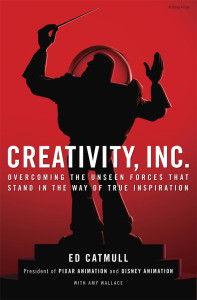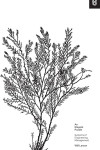Creativity, Inc
Overcoming the Unseen Forces That Stand in the Way of True Inspiration
Creativity, Inc. explores how organizations can build and sustain a creative culture through the lens of Pixar Animation Studios' experiences. Written by Pixar co-founder Ed Catmull, the book reveals the principles and practices that enable creative teams to thrive.
The book demonstrates how to create an environment where innovation flourishes while maintaining high standards of quality. Through candid stories from Pixar's history, Catmull shows how to build a culture that supports risk-taking, embraces failure as learning, and maintains creative excellence through periods of growth and change.
At its core, the book argues that creativity isn't about lone geniuses but about creating systems and cultures that allow creative teams to solve complex problems together. It provides practical frameworks for managing creative organizations and overcoming the invisible barriers that can stifle innovation.
By reading Creativity, Inc., you will:
- Master the principles of creative leadership: Learn how to build and sustain an environment where creative teams can do their best work while maintaining high standards.
- Understand how to manage creative risk: Develop approaches for encouraging innovation while balancing it with business needs and quality requirements.
- Create effective feedback systems: Learn how to structure honest feedback processes that improve creative work without dampening morale or innovation.
- Build resilient creative cultures: Understand how to develop organizational structures and practices that sustain creativity through growth and change.
Books to Follow
- "Making Ideas Happen" by Scott Belsky - Practical frameworks for creative execution
- "The Pixar Touch" by David Price - Complementary history of Pixar's development
- "Imagineeering Way" by The Disney Imagineers - Creative process insights from Disney
- "Drive" by Daniel Pink - Deep dive into motivation in creative environments
Nurturing Creativity
- Creativity isn’t about avoiding obstacles but learning to overcome them
- Culture is one of the most powerful unseen forces limiting creativity
- Everyone can contribute creative ideas - leaders must create space for contributions
- People are more important than ideas because people create ideas
- Getting stuck is a natural part of any long creative challenge
Leadership for Creativity
- Remove power dynamics from review meetings
- Brain trust doesn’t have authority over decisions
- Keep feedback separate from hierarchical power when people take things personally, they’re more defensive
Failure and Risk
- Mistakes aren’t evil - they’re the natural consequence of doing something new
- If you don’t fail, you’re making a bigger mistake: avoiding necessary risks
- Two types of failure:
- Educational - leads to growth
- Preventable screw-ups
- Failure is asymmetric with memory - often leads to positive outcomes
- Being risk-averse makes companies stop innovating
The Hungry Beast Phenomenon
- As organizations become successful, they need to constantly “feed” people with work
- This creates pressure that can stifle creativity
- Making processes cheaper/easier shouldn’t be the goal - making something great should be
Discovery Process
- Discovery by definition means not knowing the answer at start
- Use phrases like “I’m not actually suggesting but what if…” to encourage exploration
- Creativity comes from unexpected connections between unrelated concepts
Q: What makes Pixar’s “Braintrust” different from regular feedback meetings?
A: The Braintrust separates power from feedback - suggestions aren’t mandates, feedback focuses on diagnosing problems rather than prescribing solutions, and input comes from peers who understand the creative process. The creator maintains ownership while receiving candid feedback.
Q: How do you balance creative freedom with business needs?
A: Through the “Beast and the Ugly Baby” framework - protect new ideas in their early, ugly stages while maintaining clear processes for production. Different stages of creation have different standards and expectations.
Q: What’s the right approach to failure in creative work?
A: Distinguish between preventable failures (to be avoided) and experimental failures (necessary for creativity). Create an environment where people feel safe to take creative risks, learn quickly from failures, and keep failure costs manageable through early testing.
Q: How do you maintain creativity during growth?
A: Keep teams small and autonomous, maintain clear communication channels, protect new ideas from premature judgment, and create formal processes for candid feedback. Focus on removing fear from the creative process.
Q: What makes creative feedback effective?
A: Good feedback leads to visible improvements, feels constructive to recipients, generates new possibilities, strengthens relationships, and focuses on improving the work rather than being right.
Q: How should creativity be measured?
A: Balance quantitative metrics with qualitative feedback, focus on long-term impact over short-term results, and measure both team health and output quality. Emphasize learning and improvement over pure productivity.
Common Implementation Challenges
Fear of Candid Feedback
- Start with small, trust-based groups
- Model receiving feedback well as a leader
- Focus on improving work, not criticizing people
Balancing Structure and Freedom
- Create clear boundaries while allowing flexibility
- Use different approaches for different creative stages
- Focus on outcomes rather than rigid processes
Scaling Creative Culture
- Maintain small team sizes
- Document principles while allowing local adaptation
- Create multiple feedback channels
- Develop creative leadership at all levels
- When building or transforming creative teams: The book provides practical frameworks for fostering creativity while maintaining quality standards.
- During periods of rapid growth: Learn how to scale creative processes and maintain culture through organizational change.
- When struggling with feedback processes: Gain insights into creating effective feedback systems that improve work without stifling creativity.
- When balancing creativity with business needs: Understand how to encourage innovation while meeting business objectives.

Your support helps me maintain and improve the book recommendations for everyone.






